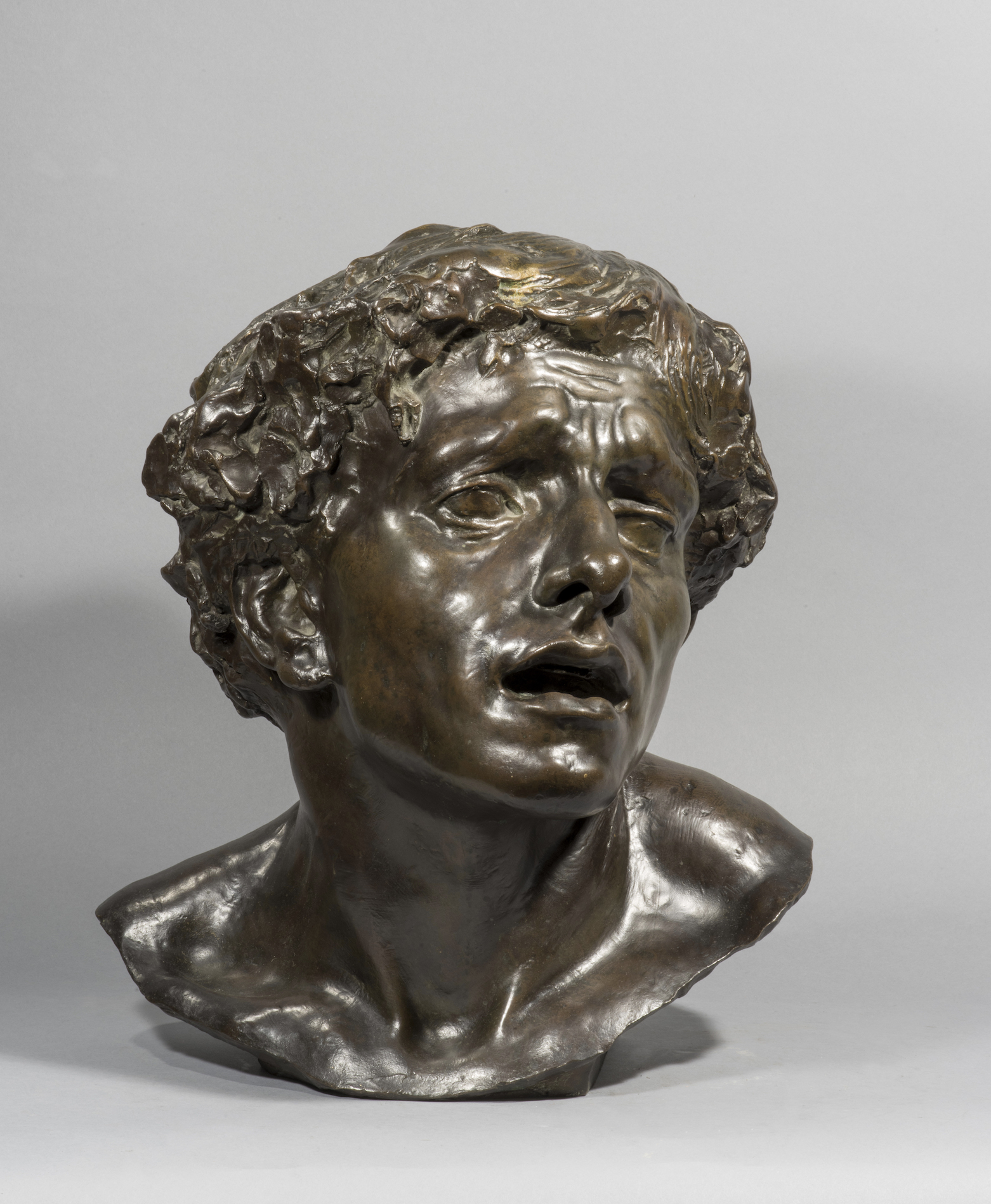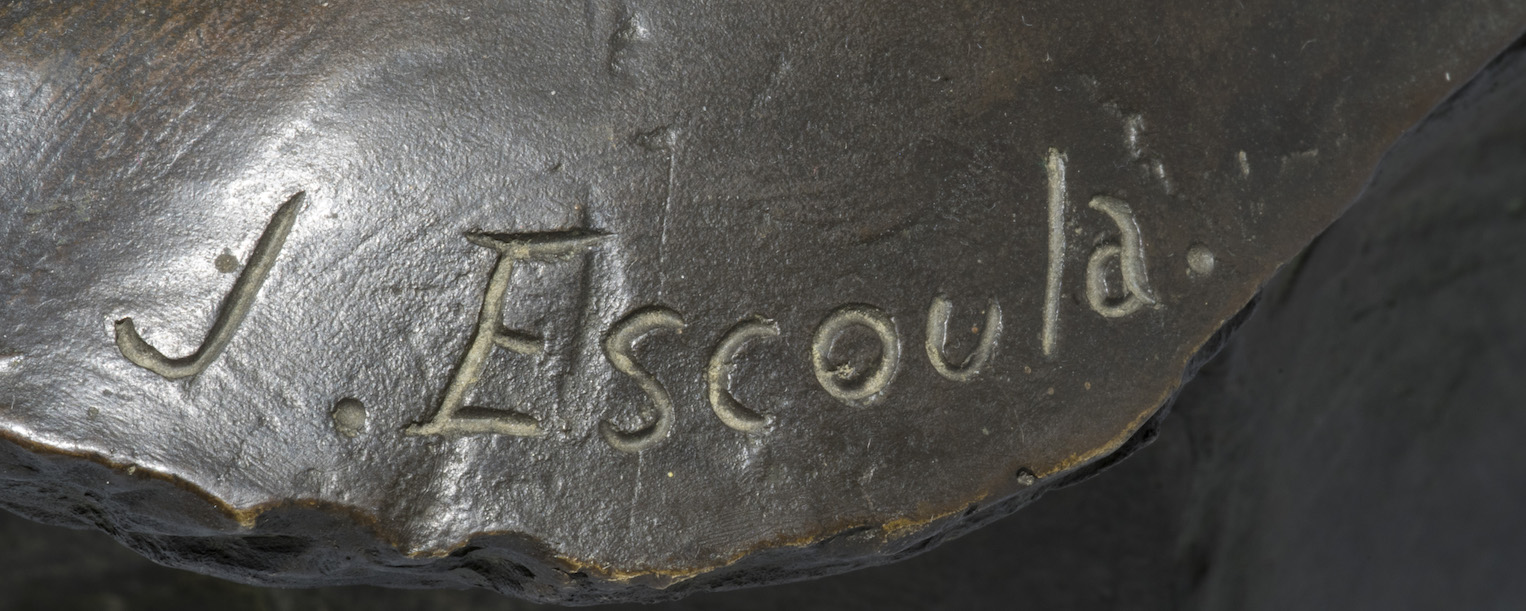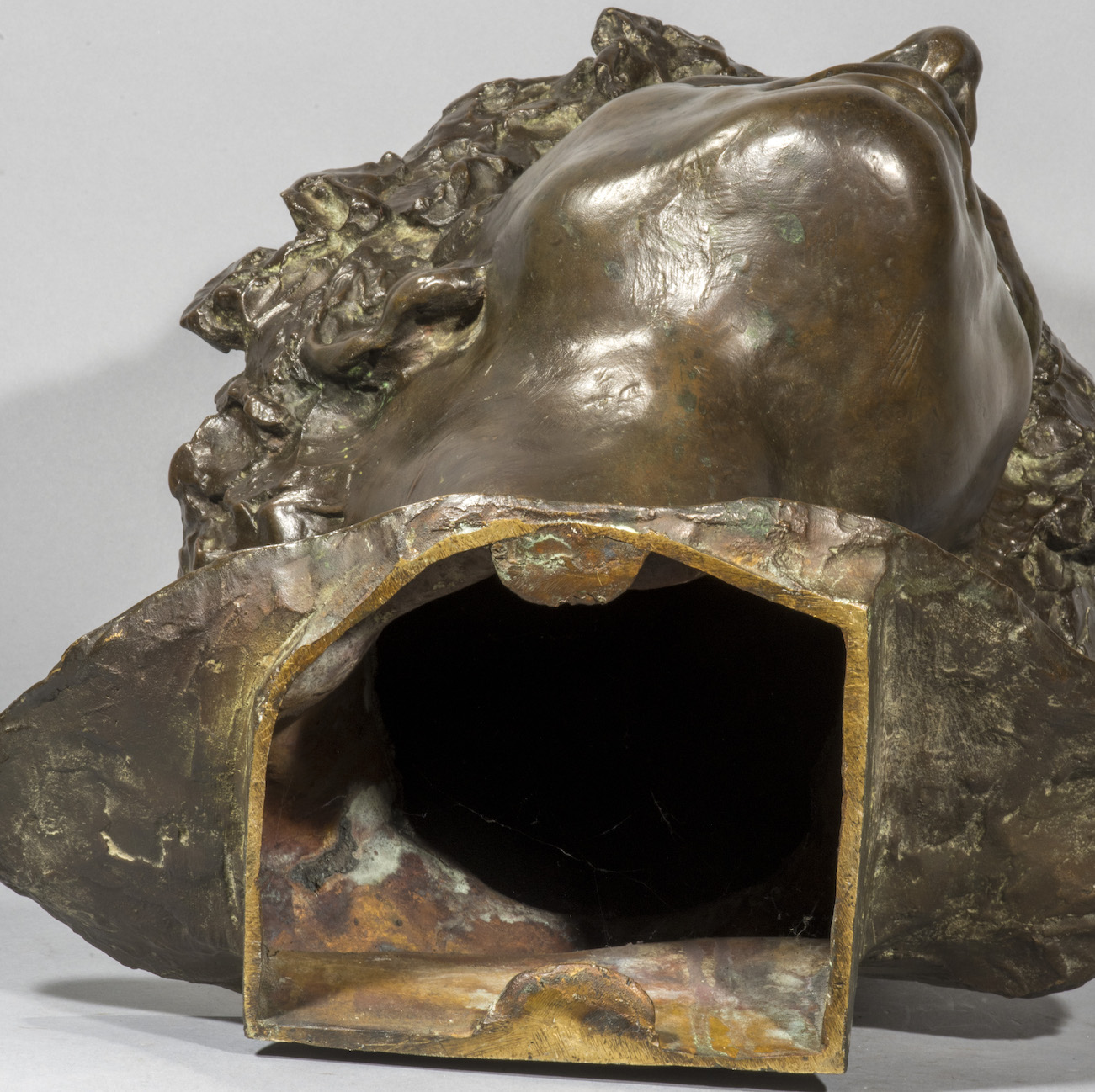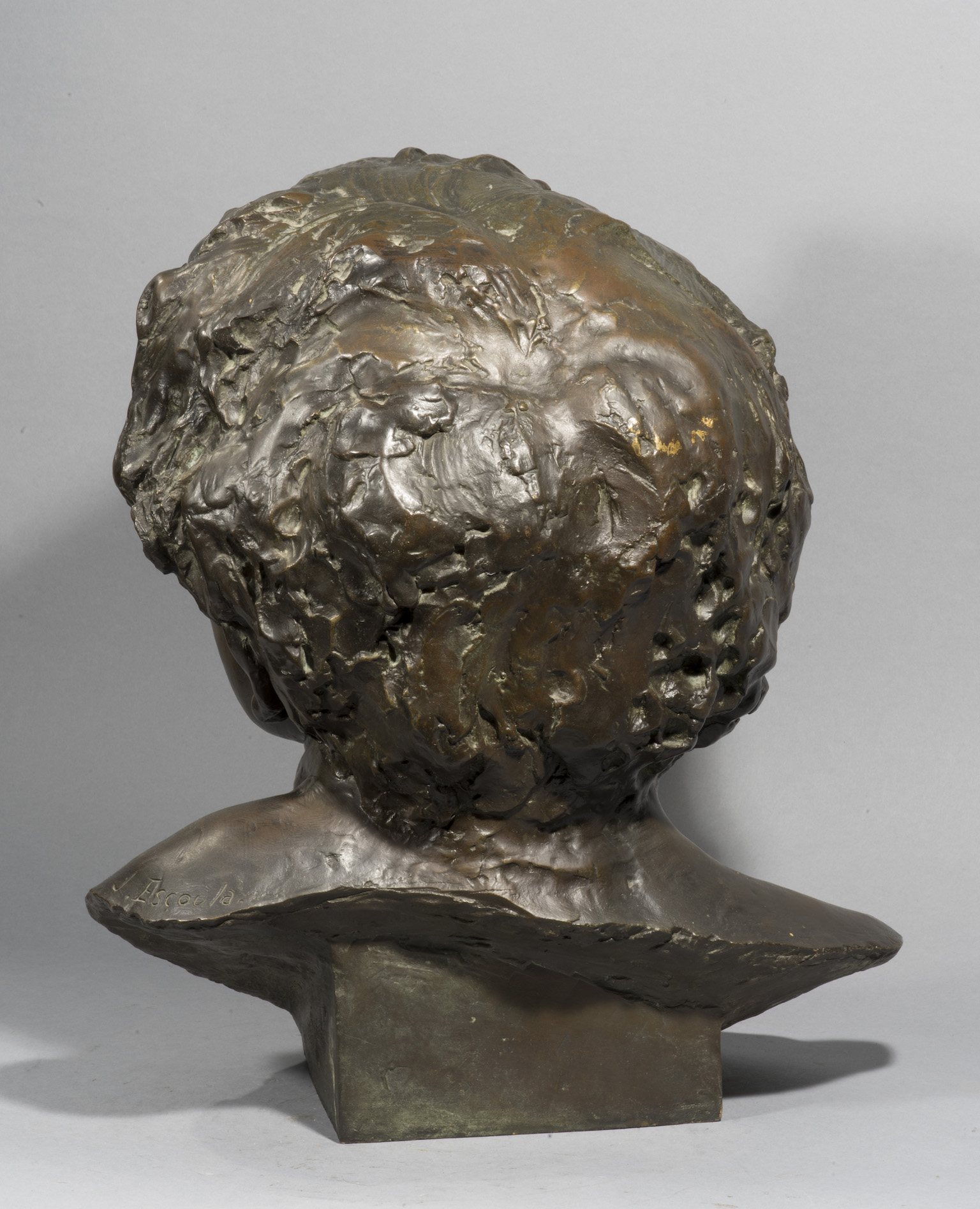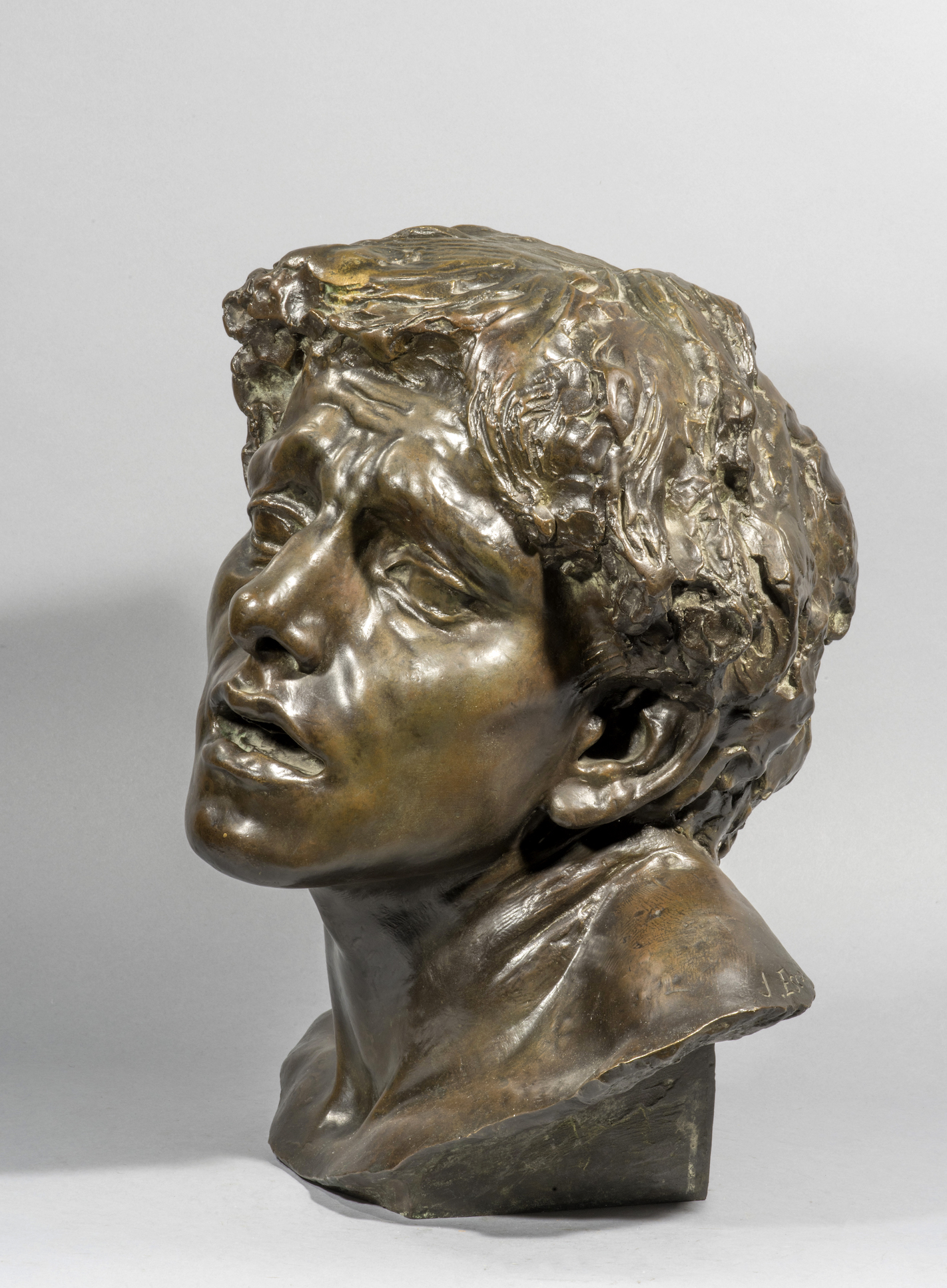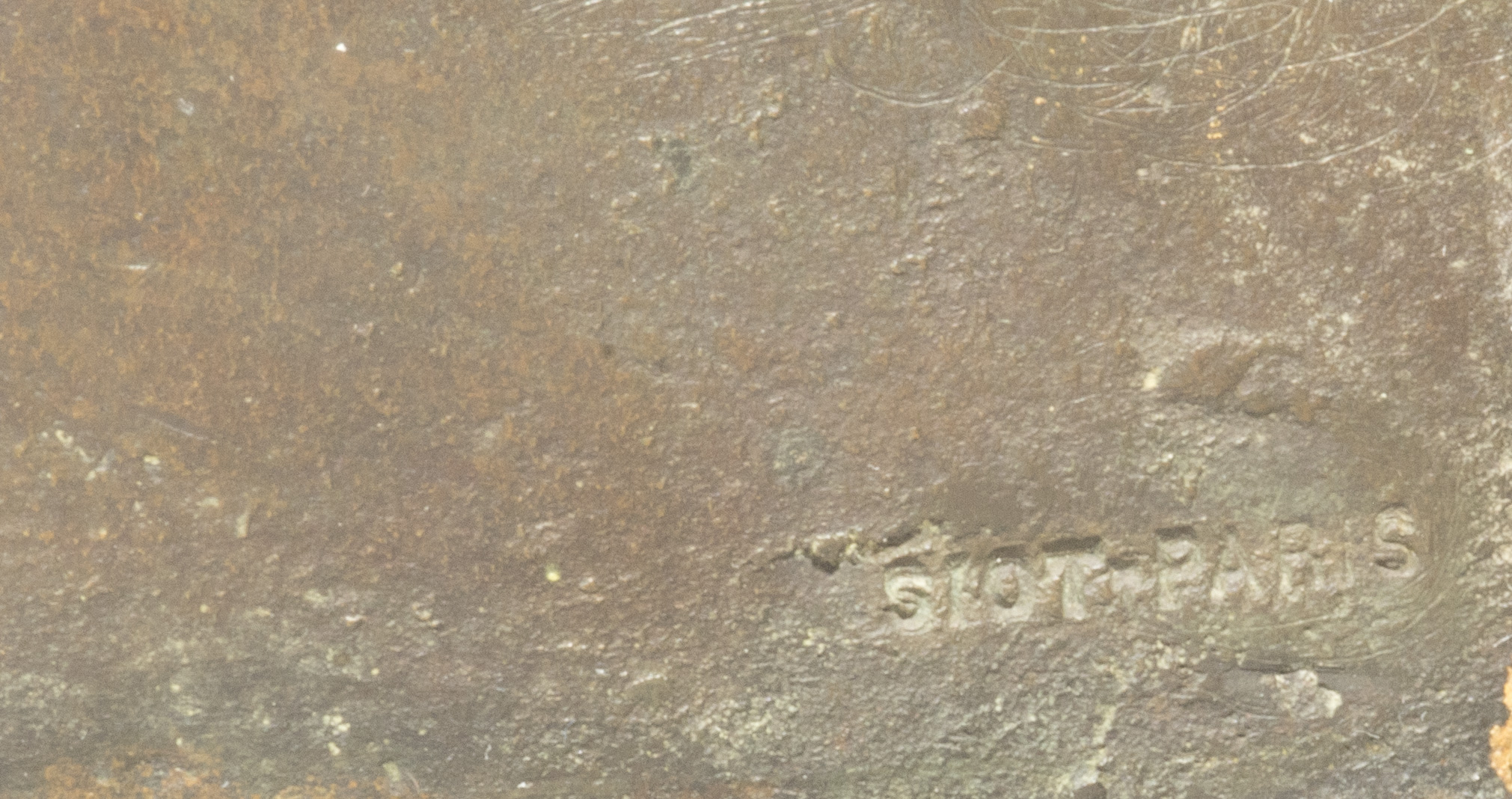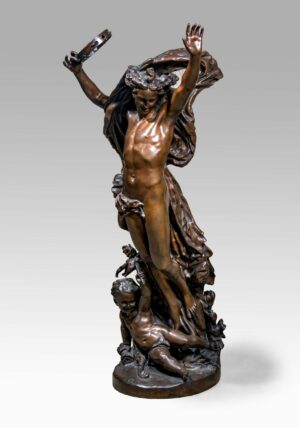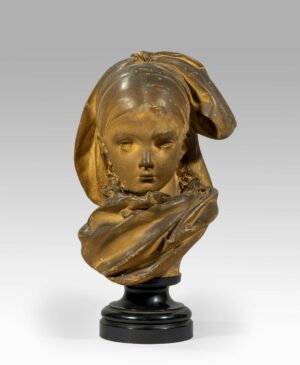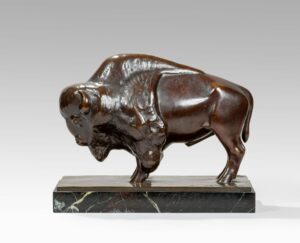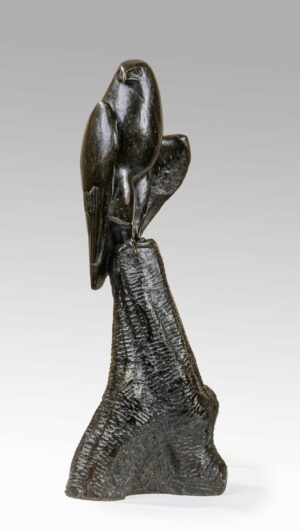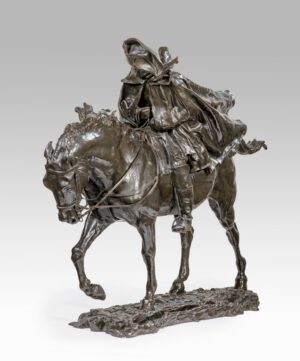Description
The son of a marble supplier, Jean Escoula first worked with Carpeaux, then with Rodin from 1887 to around 1900, for whom he produced a number of works, including the Danaïde. This did not prevent him from sculpting works of his own and exhibiting at the Salon des artistes français until 1890, when, following in Rodin’s footsteps, he was admitted to the Société nationale des Beaux-Arts.
Escoula took the head of La Douleur from his group Mort de Procris, which was shown in plaster at the Salon des Artistes français in 1890. The subject was inspired by an episode from Greek mythology: Procris was married to Cephalus. Jealous, she hid in the bushes to spy on her husband when he was out hunting. Seeing a branch move, he believed he was in the presence of a prey and pierced his beloved with his javelin. Here, Escoula shows only the head of Cephalus, in despair after his terrible mistake. This open-mouthed head, like that of Canova’s Medusa, could have met the criteria for the “tête d’expression” competition founded by the Comte de Caylus in 1760. La Douleur also recalls the features of the eldest child in Carpeaux’s Ugolin (1860) and those of Pierre de Wissant in Rodin’s Bourgeois de Calais(1889).
The public reacted positively, which provokes emotion using a familiar vocabulary. This head was a success. Siot-Decauville edited it in bronze as early as 1898. Despite this, bronze examples remain quite rare to this day, with only two known examples, our cast and the one in the Musée de Valenciennes.
The precise modeling of this face and the particular twist of the neck give the head a striking force. The broadly treated hair and taut, hollowed muscles, creating harsh contrasts, are reminiscent of contemporary work by Rodin.

